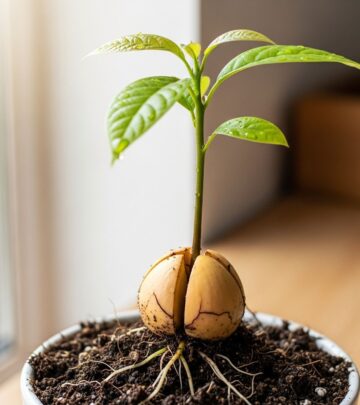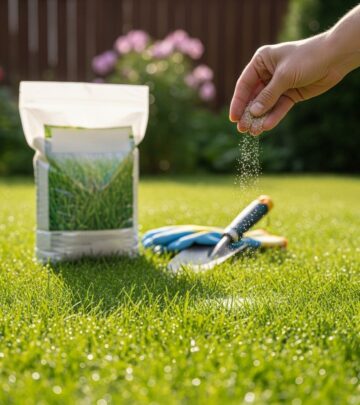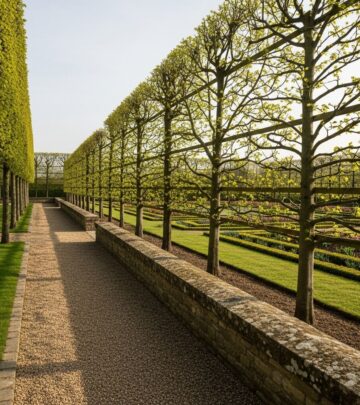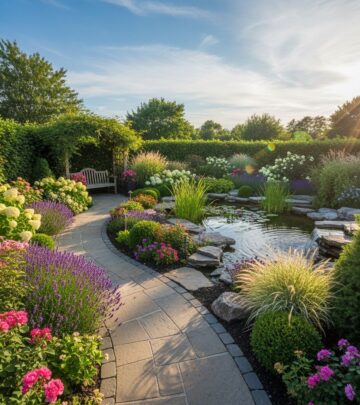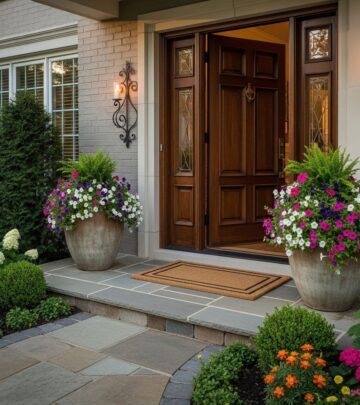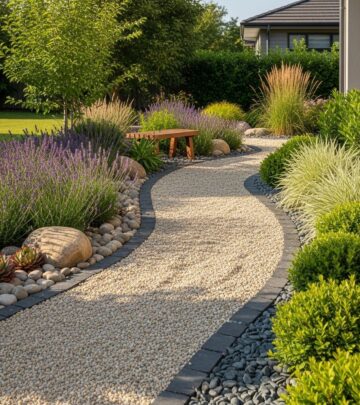Eco Friendly Lawn Alternatives: 5 Sustainable Grass Substitutes
Transform your yard with eco-friendly alternatives that save water, reduce maintenance, and support wildlife.
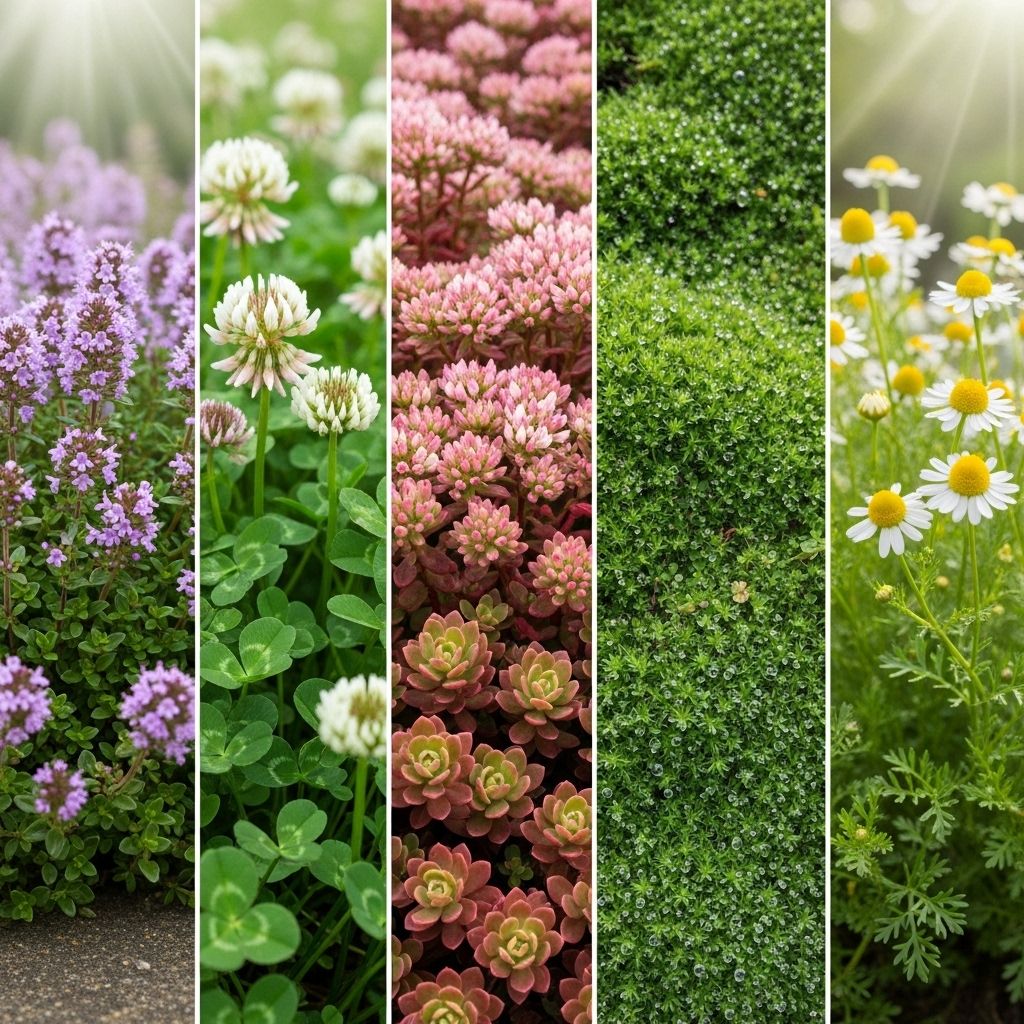
Image: HearthJunction Design Team
Eco-Friendly Lawn Alternatives: Sustainable, Beautiful Substitutes for Grass Lawns
Traditional grass lawns have long symbolized the American dream of homeownership—a lush, green expanse that’s both functional and beautiful. But as water shortages, maintenance costs, and environmental awareness increase, homeowners are seeking eco-friendly ways to replace their thirsty turf. Explore practical, inspiring alternatives that conserve resources, support biodiversity, and create striking outdoor spaces.
Why Reduce or Replace Your Lawn?
Shifting away from grass lawns isn’t just a trendy movement—there are compelling environmental, economic, and aesthetic reasons for transforming your yard:
- Water Conservation: Lawns demand significant irrigation, especially in dry climates. Reducing or replacing turf can cut your outdoor water use dramatically.
- Lower Maintenance: Conventional lawns require frequent mowing, fertilizing, aeration, and pest control—replacements need less upkeep.
- Support Biodiversity: Many eco-friendly alternatives provide food and habitat for pollinators, birds, and beneficial insects.
- Reduce Chemical Use: Lawn alternatives minimize or eliminate the need for pesticides and fertilizers, leading to healthier soil and waterways.
- Cut Costs: Over time, less water, fewer chemicals, and reduced maintenance mean more money in your pocket.
- Resilience: Alternatives are often better adapted to local climates, requiring less intervention to stay green and vibrant.
Best Grass Lawn Alternatives
There’s a wide variety of eco-friendly options that can replace all or part of your traditional lawn. These alternatives can be tailored to your climate, desired look, and maintenance goals.
1. Eco-Friendly Lawn Seed Mixes
For those who still love the look of a green carpet, opt for specialized seed mixes. Modern blends combine:
- Drought-tolerant grasses
- Low-growing clovers
- Herbs (like yarrow or creeping thyme)
- Native wildflowers for color and pollinator support
These require less water, little to no mowing, and minimal fertilizer. Choose a mix suited to your region and sunlight conditions for best results.
2. Ground Covers
Ground cover plants form dense mats, effectively crowding out weeds and minimizing soil erosion. Popular choices include:
- Creeping Thyme (Thymus serpyllum): Drought tolerant, evergreen, and adorned with purple flowers that attract pollinators.
- Clover (Trifolium spp.): Stays green with little water or fertilizer, hosts beneficial insects, and feels soft underfoot.
- Creeping Jenny (Lysimachia nummularia): Bright green foliage that trails beautifully over stones or borders.
- Sweet Woodruff (Galium odoratum): Shade-loving with fragrant white flowers in spring.
- Periwinkle (Vinca minor): Hardy, with glossy leaves and blue or purple flowers.
- Sedum (Stonecrop): Succulent mats perfect for hot, dry locations.
- Corsican Mint (Mentha requienii): Tiny leaves with a refreshing mint scent, ideal for part shade.
Ground covers are often evergreen and rarely need mowing or fertilizing. Select varieties native to your area for the greatest ecological benefit.
3. Moss Lawns
Moss is a surprisingly attractive option for shaded or damp areas where grass struggles. Its benefits:
- Remains vibrantly green year-round
- Thrives in shade and acidic soil
- Needs no mowing, irrigation, or fertilization
- Creates a soft, tranquil “carpet” effect
Popular species include fern moss (Thuidium), pincushion moss (Leucobryum), Irish moss (Sagina), and Scotch moss (Arenaria) .
4. Wildflower Meadows
Meadows filled with native wildflowers and grasses create a vibrant, ever-changing landscape:
- Support pollinators and wildlife
- Require mowing just once or twice a year
- Thrive on poor soil and need little water after establishment
- Offer dramatic seasonal color
Choose a seed mix tailored to your climate. Be patient—meadows may take a season or two to fully mature.
5. Hardscape Solutions
Transitioning portions of your yard into functional, low-maintenance hardscape areas is both practical and sustainable. Consider:
- Permeable Pavers: Allow rainwater to seep into the soil, reducing runoff.
- Decomposed Granite or Pea Gravel: Attractive, natural-looking surfaces for paths or patios.
- Stone Pathways, Stepping Stones, or Mulched Trails: Define garden rooms and invite exploration.
- Seating Areas: Create zones for relaxation and entertainment.
Hardscape interspersed with plantings reduces maintenance and increases outdoor usability .
Alternatives to Avoid
Not all grass substitutes are eco-friendly. Some options may do more harm than good:
- Artificial Turf: While it eliminates mowing and watering, it heats up surfaces, doesn’t support wildlife, and degrades into microplastics over time.
- Invasive Non-Native Ground Covers: Plants like English ivy or certain types of bamboo can escape cultivation and harm local ecosystems.
- Impermeable Surfaces: Solid concrete or asphalt directs runoff and increases the risk of flooding and pollution.
Choose alternatives that enhance the soil, promote biodiversity, and fit the character of your home and climate.
Top Plants for Lawn Alternatives
Here are several of the best-performing species and mixes for eco-friendly lawns and turf replacements, suitable for various regions:
| Plant Type | Scientific Name | Best For | Notes |
|---|---|---|---|
| Clover Mix | Trifolium repens, T. pratense | Sun to part shade | Stays green, fixes nitrogen, soft feel |
| Creeping Thyme | Thymus serpyllum | Full sun, dry spots | Fragrant, attracts pollinators |
| Moss | Thuidium, Leucobryum, Sagina, Arenaria | Shade, moist soil | Low maintenance, vibrant green |
| Buffalograss | Buchloe dactyloides | Sunny, dry climates | Native to the plains, ultra low water needs |
| Lawn Daisy | Bellis perennis | Cool climates | Charming, tolerates some foot traffic |
| Sweet Woodruff | Galium odoratum | Shade gardens | Fragrant, starry flowers in spring |
Lawn Alternative Design Ideas
Eco-friendly lawn alternatives unlock creative possibilities for front or backyards. Consider these ideas to blend function, beauty, and sustainability:
- Moss Gardens: Perfect for shady or woodland sites where turf won’t grow. Pair moss with stepping stones and shade-loving perennials.
- Mixed Groundcover Tapestry: Combine several species (e.g., thyme, sedum, clover) for a varied, textural look that changes with the seasons.
- Meandering Paths: Use permeable materials for inviting walkways between plant beds, minimizing compaction and runoff.
- Rain Gardens: Transform low spots into rain gardens filled with native water-loving plants, filtering runoff and supporting wildlife.
- Edible Lawns: Incorporate low-growing herbs or berry species for a functional, productive landscape.
- Flowering Meadows: Dress up larger spaces with a mix of native wildflowers and ornamental grasses for year-long color and movement.
- Sitting and Play Areas: Replace turf with mulch or gravel under swings or benches, and create inviting zones for gathering or relaxation.
Getting Started: Steps to Transition Your Lawn
Ready to make the switch? Here’s a roadmap for transitioning from turf to an eco-friendly yard:
- Assess your conditions (sun, soil, foot traffic, local climate).
- Remove existing lawn using sheet mulching, solarization, or manual methods.
- Amend soil as needed for your chosen alternative.
- Select region-appropriate, drought-tolerant plants or seed mixes.
- Install hardscape or define paths and seating areas as desired.
- Water new plantings regularly while they establish, then gradually reduce irrigation.
- Enjoy a lower-maintenance yard that supports wildlife and saves resources.
FAQs About Eco-Friendly Lawn Alternatives
What is the lowest maintenance lawn alternative?
Moss gardens require virtually no mowing, watering, fertilizing, or pest management once established, making them among the easiest alternatives for shade or damp sites . For sunny spots, clover or no-mow fescue blends are excellent choices.
Can lawn alternatives handle foot traffic?
Some options—like clover, creeping thyme, buffalograss, and sedum—tolerate light to moderate foot traffic. Paths of stepping stones or permeable pavers can be used to guide heavy use areas while protecting more delicate plantings .
Will lawn alternatives attract pollinators and wildlife?
Yes. Wildflowers, clover, thyme, and native ground covers provide nectar, pollen, and habitat, making them outstanding for supporting bees, butterflies, and birds .
How much water do lawn alternatives need compared to traditional grass?
Most eco-friendly lawn replacements use a fraction of the water regular grass requires—often 50–80% less after establishment, especially if you choose drought-adapted species or mixes .
Are there attractive alternatives for front yards?
Absolutely. Combinations of ground covers, flowering perennials, mulched beds, and permeable paths can look polished and inviting while offering curb appeal, seasonal interest, and lower maintenance .
Conclusion: The Future of Sustainable Yards
As resource conservation and biodiversity move to the forefront of landscape design, embracing eco-friendly lawn alternatives is both rewarding and smart. Whether you replace all or part of your turf, you’ll benefit from lower maintenance, water savings, and a richer outdoor experience for people and wildlife alike. With so many innovative plant choices, mixes, and design solutions available, your lawn can be transformed into a living, resilient tapestry that enhances both your home and the planet.
References
- https://www.opnseed.com/collections/eco-friendly-lawn-alternatives
- https://www.marthastewart.com/8116129/grass-lawn-alternatives
- https://www.gardendesign.com/eco-friendly/lawn-alternatives.html
- https://www.ecohome.net/guides/3402/grass-lawn-alternatives-eco-friendly-bee-friendly/
- https://www.lawnstarter.com/blog/lawn-care-2/eco-friendly-grass-alternatives/
Read full bio of Anjali Sayee





